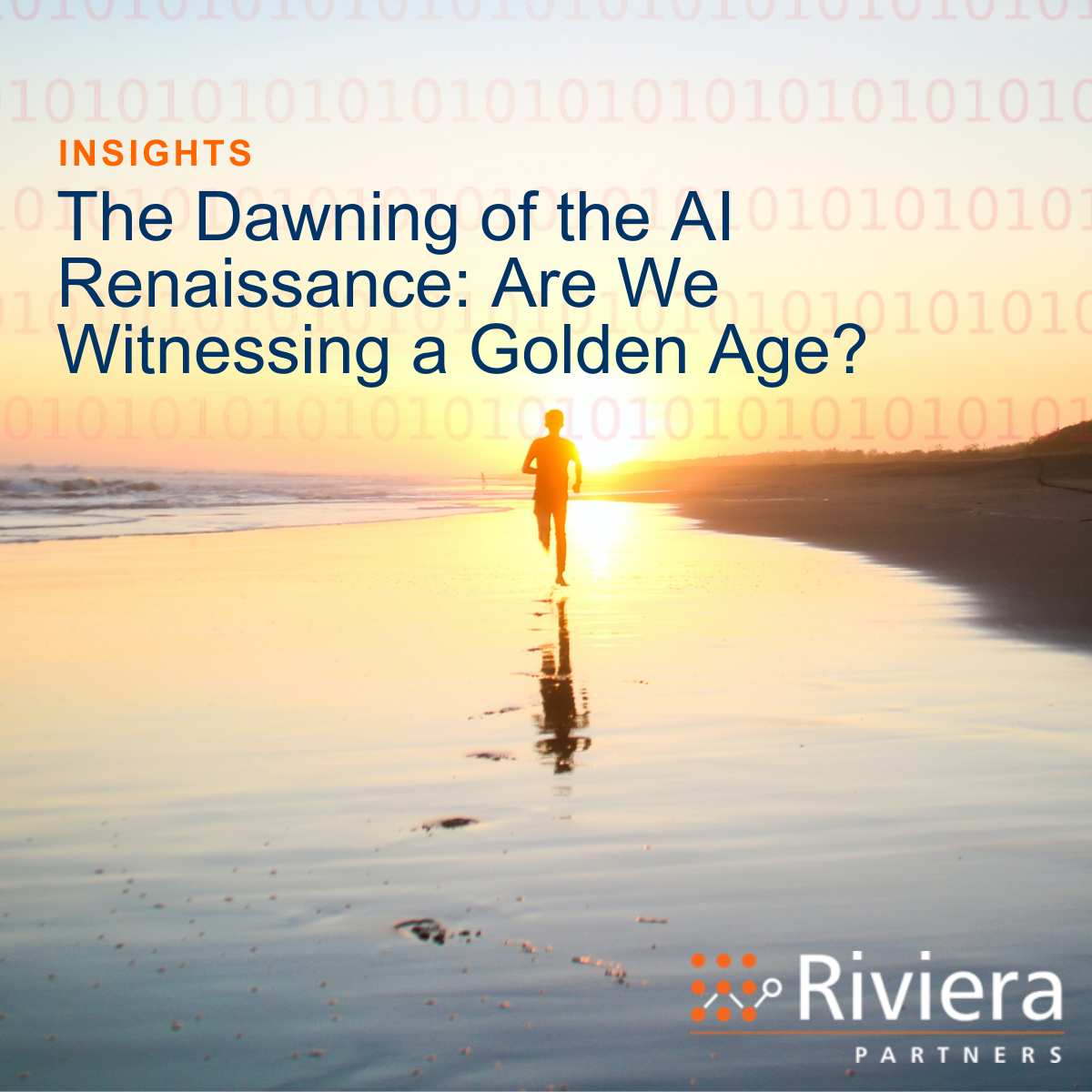
We stand on the precipice of an era teeming with possibilities, with consumers and the general public getting teasers of what could be and the shapes that AI services may take, a time I believe may be regarded as the Golden Age of Artificial Intelligence (AI). This statement might invoke skepticism, given that we’ve seen several AI “winters” – periods where progress in AI research stagnated, and enthusiasm cooled. We’ve also seen AI mishaps, the science behind AI is not something that matures in a straight line up and to the right. But, as I look around at the current landscape of technology and innovation, and engage with the executives leading the field forward, I am more and more convinced that we are, indeed, entering an age of unparalleled AI advancements.
We have arrived at a point where AI is not just a footnote of computer science. It is now at the forefront of the digital transformation that is changing the way we work, live, and interact. And there is good reason why this might be the dawn of the AI Golden Age.
1. Proliferation of Data: The Lifeblood of AI
Data is the raw material for AI. The more data we have, the better AI systems can learn, adapt, and evolve. In the era of big data, the latest estimates suggest we’re producing approximately 328 million terabytes of data each day. Around 120 zettabytes of data will be generated this year and an estimated 181 zettabytes of data will be generated in 2025. As we’ve learned, and seen publicly displayed, more data doesn’t mean better data. But the sheer volume of data is the lifeblood of AI systems, and the data being used to train the algorithms and models that allow AI to simulate intelligent behavior, is growing at a staggering rate.
2. Advances in Computing Power: The Muscle of AI
The processing power required to analyze and learn from vast amounts of data is colossal. The advent of more powerful processors, GPUs, and the scale at which they will be delivered over the next 10 years have enabled us to develop complex models that would have been inconceivable just a few years ago. The continual enhancement of these technologies suggests that we have not yet reached the apex of our computing power. Quantum computing is just getting off the ground, and the variety of problems quantum computers are designed to solve is still very narrow. But this will not always be the case. More muscle means better and faster learning and adaptation, which bodes well for AI.
3. Evolution of AI Models: The Brain of AI
AI has come a long way since the now rudimentary decision trees of the early days. With advancements in machine learning, particularly in deep learning and reinforcement learning, we now have models that can identify patterns and learn from data in ways that mimic the human brain, and sometimes do it surprisingly well. The ability of groundbreaking models like OpenAI’s GPT-4 to comprehend and generate human-like text, demonstrate a previously unseen level of sophistication and quality of experience. As we make strides in creating even more advanced models, AI’s capacity for ‘intelligence’ is exponentially increasing.
4. Interdisciplinary Approach: The Soul of AI
One important trend is the growing intersection of AI across fields of study, from neuroscience and philosophy to biology and physics to design. This diverse interdisciplinary approach is offering a broad holistic perspective on what intelligence may mean for software programs, informing how we design and implement AI. As AI becomes more embedded in our daily habits, ethics and law come into the spotlight (as we’re seeing now), stimulating further advancements that bolster attempts to ensure AI is responsible, fair, and beneficial.
5. Acceptance and Implementation: The Heart of AI
The adoption and acceptance of AI across industry sectors signify a significant shift. From healthcare and education to finance and entertainment, AI is making its presence felt. Governments are actively investing in AI research and development, and businesses are harnessing AI to drive efficiency and innovation. This increased acceptance and implementation, coupled with a keen interest in AI literacy, is driving us toward a prolific AI evolution.
We are entering an age of incredible exploration and discovery. And with exploration comes an equivalent level of risk, danger, and things gone wrong. AI issues are likely to center around privacy, bias, job displacement, and the potential misuse of AI for malicious purposes. And these risks are real and need to be addressed proactively.
Our recent survey on the Future of Tech Leadership, showed that Tech leaders are not content to wait for large-scale strategic decisions concerning AI, regulatory oversight, or industry guidelines before embracing experimentation with new technologies, such as Generative AI. However, awareness of these concerns, and attention to those that will arise, is a positive sign. It suggests we are not blindly racing towards advancement but are instead interested and willing to invest to harness AI responsibly. And that gives me confidence that we are on the precipice of a Golden Age of AI, one that is not only marked by technical advancement but also by ethical awareness and maturity.